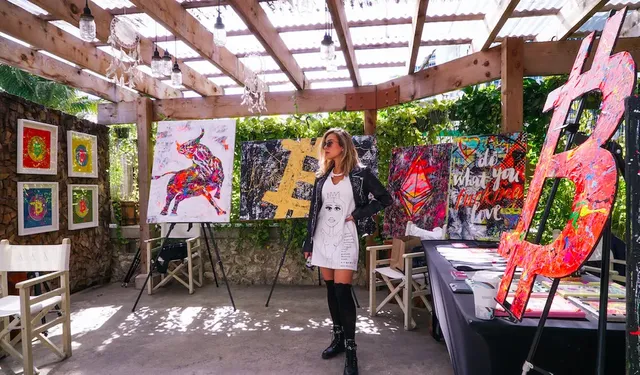With NFT marketplaces selling artworks becoming a trendy business model, entrepreneurs have started seeing the potential the model holds in the long term. In this case, one should consider the impact NFT marketplace development has left in the art space. Also, we should focus on the future, as more mainstream adoption of NFTs is expected this year. Let us see the future of NFT marketplaces and their impact on the art industry extensively.

How Does the Future of NFT Marketplace Development Look Like?
One potential direction for the NFT marketplace business model is an increase in mainstream adoption. As more people become aware of NFTs and their potential value, it's likely that more businesses will start integrating them into their operations.
Additionally, we may see more specialized NFT marketplaces catering to specific industries or asset types. For example, a marketplace focused solely on selling digital fashion items or virtual real estate.
Another potential development is the use of NFTs as a means of authentication and verification. NFTs could be used to prove ownership and authenticity of physical assets like luxury goods or real estate, adding an extra layer of security and trust to transactions.
Impact of NFT Marketplaces on the Art World
The impact of NFT marketplaces on the art world has been significant, as they have enabled artists to monetize their digital creations and reach a broader audience than ever before. Here are some of the key ways in which NFT marketplaces have impacted the art world:
New Revenue Streams for Artists: NFT marketplaces allow artists to sell their digital artworks directly to collectors, eliminating the need for intermediaries like galleries or auction houses. This can result in higher profits for artists, as they can set their own prices and receive a larger share of the sale.
Increased Accessibility: With NFTs, digital art is now accessible to a wider audience, regardless of their physical location or socioeconomic status. This has democratized the art world, allowing artists to reach a global market and connect with collectors from all over the world.
Challenges to Traditional Art Market Structures: The rise of NFTs has disrupted traditional art market structures, challenging the dominance of galleries and auction houses. This has led to new business models and platforms that are more inclusive and diverse.
New Ways of Creating and Experiencing Art: NFTs have opened up new possibilities for creating and experiencing art, such as interactive digital installations and augmented reality artworks. This has expanded the definition of what art can be and how it can be created.
Conclusion
Hence, we have seen a glimpse of how NFT marketplaces will work in the future while detailing the impact they have left in the art world. Whatever is being said here only enables the betterment of worldly norms that has been plagued with intermediaries who take up valuable resources and time. If you are an entrepreneur considering building an NFT marketplace for artists, this could be the perfect moment to start, as more artists are getting into the virtual space.
You've got a free upvote from witness fuli.
Peace & Love!
Downvoting a post can decrease pending rewards and make it less visible. Common reasons:
Submit